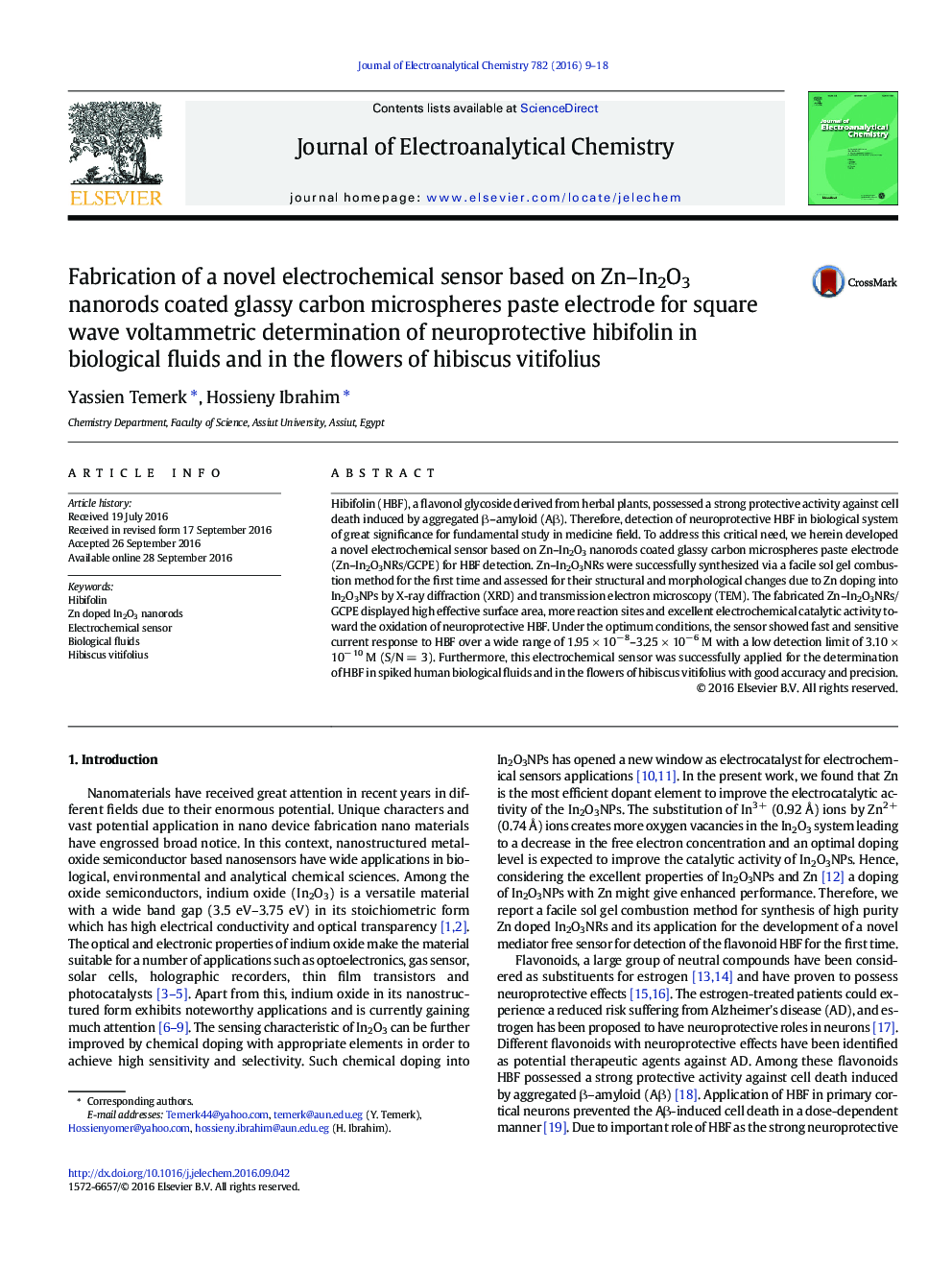| کد مقاله | کد نشریه | سال انتشار | مقاله انگلیسی | نسخه تمام متن |
|---|---|---|---|---|
| 4908228 | 1426593 | 2016 | 10 صفحه PDF | دانلود رایگان |

- A novel electrochemical sensor based on Zn-In2O3 nanorods coated glassy carbon microspheres was fabricated.
- Zn-In2O3NRs/GCPE sensor showed high electrocatalytic activity toward the oxidation of HBF.
- The electrochemical sensor was applied for the determination of HBF in biological fluids and in hibiscus vitifolius.
- The modified electrode exhibited considerable sensitivity, stability and reproducibility.
Hibifolin (HBF), a flavonol glycoside derived from herbal plants, possessed a strong protective activity against cell death induced by aggregated β-amyloid (Aβ). Therefore, detection of neuroprotective HBF in biological system of great significance for fundamental study in medicine field. To address this critical need, we herein developed a novel electrochemical sensor based on Zn-In2O3 nanorods coated glassy carbon microspheres paste electrode (Zn-In2O3NRs/GCPE) for HBF detection. Zn-In2O3NRs were successfully synthesized via a facile sol gel combustion method for the first time and assessed for their structural and morphological changes due to Zn doping into In2O3NPs by X-ray diffraction (XRD) and transmission electron microscopy (TEM). The fabricated Zn-In2O3NRs/GCPE displayed high effective surface area, more reaction sites and excellent electrochemical catalytic activity toward the oxidation of neuroprotective HBF. Under the optimum conditions, the sensor showed fast and sensitive current response to HBF over a wide range of 1.95 Ã 10â 8-3.25 Ã 10â 6 M with a low detection limit of 3.10 Ã 10â 10 M (S/N = 3). Furthermore, this electrochemical sensor was successfully applied for the determination of HBF in spiked human biological fluids and in the flowers of hibiscus vitifolius with good accuracy and precision.
An effective strategy to fabricate a novel Zn-In2O3 nanorods modified glassy carbon electrode was developed for the first time. The response of the Zn-In2O3NRs/GCPE for sensing the neuroprotective hibifolin (HBF) has been explored. High selectivity and good antifouling ability promote the proposed modified electrode to be an effective sensor for direct determination of HBF in human biological fluids and in the flowers of hibiscus vitifolius at nanomolar level. Detection of this flavonoid HBF, which protected neurons against Aβ-induced apoptosis, could be useful in finding potential drug, or food supplements, for treating Alzheimer's disease.361
Journal: Journal of Electroanalytical Chemistry - Volume 782, 1 December 2016, Pages 9-18